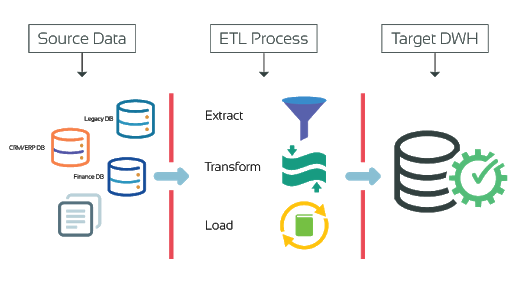We can get greater insights into data through its procession & it is one of the crucial parts of data. Both data migration & ETL are related to the data. Data migration, Data integration, and ETL are all related to the data and its processing & usage.
ETL means that, Extract, Transfer & load.
Data migration is the process of sending data from one system to another system.
Also Read: What is Digital Marketing?
Data Migration :
In data migration, Information or data is transferred from one system to another.
In this process, only the information is being moved and changes made to the new target system location.

Data migration is the major part as it is required to enhance & consolidate servers and different hardware. It is also important for data warehouses, data lakes, cloud storage.
Data migration is useful within the system like in HDD or SDD.
There are three major choices to attain data migration:
- Integrate two systems into a new one
- Move one system to the other one
- Leave the system as it is and make a common perception on both of the systems
ETL :
ETL has 3 phases:
- Extract
- Transform
- Load
Extract
Extract means the extraction of data from the source system and making it obtainable for later processing. The main purpose of the Extract phase is to get data safely from the sender.
This phase has a high response time, performance, and security.
In particular, before data transmitted to a new system, it should be extracted fully from its source end. In this first phase of ETL phase, arranged and unarranged data is sent and
transformed into a single repository.
Unprocessed data can be extracted from a wide range of sources:
- Different databases
- Hybrid environment
- Cloud storage system
- Mobile applications
- Data warehouses
- CRM system
- Mobile devices
ETL Tools:
- SAP Data Services
- Talend open studio & Integration suite
- SQL Services Integration Services(SSIS)
- IBM Information Server(Datastage)
- Oracle Warehouse Builder(OWB)
- CloverETL
- Microsoft SSIS
- Informatica PowerCenter
- Syncsort DMX
- Cognos Data Manager
Transform
During this phase, laws, direction, regulation, and different rules can be applied that ensures data quality, privacy, and accessibility. In this process, we have to process data to check its usage to the end-user.
This phase consist of different sub-processes:
- Cleaning: False values in the data are resolved.
- Standardization: Formatting to the required data set.
- Duplicating: Redundant or no useful data is removed.
- Verifying: Rechecking for redundancy of data and removed if found.
- Sorting: Data is arranged in one type of key set.
- Other: Any other process, rules, and regulations can be applied to improve data quality.
Data transfer is an important phase of the ETL process as it is responsible for the integration of data. Formation of data for the next phase. This phase helps data be available for ready to use and fully accessible.
Load
This is the final phase of the ETL process, responsible for loading the newly transferred data. Throughout the load process, It is compulsory to check that the load is exercised correctly and with little sources and time.
Data can be loaded as:
- All at once(Full load)
- At scheduled Intervals(Incremental load or partial load)
All at once (Full load):
In this, ETL full loading means Everything that comes by transferring data directly goes to the new, latest, and unique location in the data warehouse.
On occasions, Full loading is difficult as per the maintenance point of view.
At Scheduled Intervals(Incremental load or partial load):
It is a less inclusive but more managed approach in this type of loading.
Indeed, scheduled intervals loading compares incoming data with the already existing data and produces extra records if any new information is available or found.
Additionally, this loading system is useful for smaller data warehouses to maintain data.
Importance of data migration in ETL:
First and foremost, data migration in ETL makes rid of old technology.
Merging two or more systems, and improving performance. It is a critical and decisive function that permits data to be maintained and transferred to the latest and upgraded system.
Furthermore, It involves every data possessed and used by an organization, company, or individual hence the migration process is important to its success and to maintain data integrity.
Features:
- Ease of Use
- Visual Flow
- Easy to Work in Complex Managements
- Increase in Business Intelligence
- High Return of Investment (ROI)
To Sum Up:
Above all, Data is the most dominant element to the success of any business. Following, the data should be easily available, accessible. Data integrity is of the highest compelling.
On the other hand, when we talk about performance there are risks too available.
There is also the possibility of data corruption or missing, there are other issues available while data migration and they are harmful to any business. To avoid all risks related to the data, protect every aspect of data.








